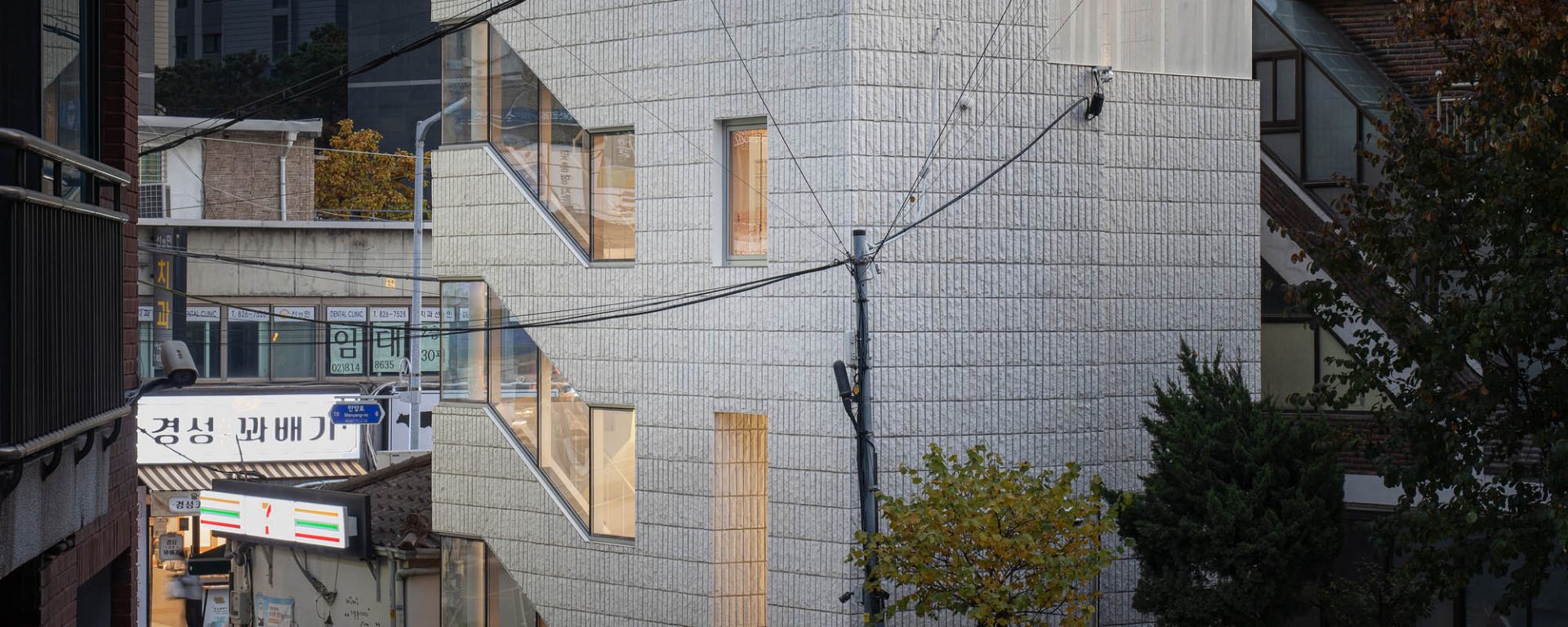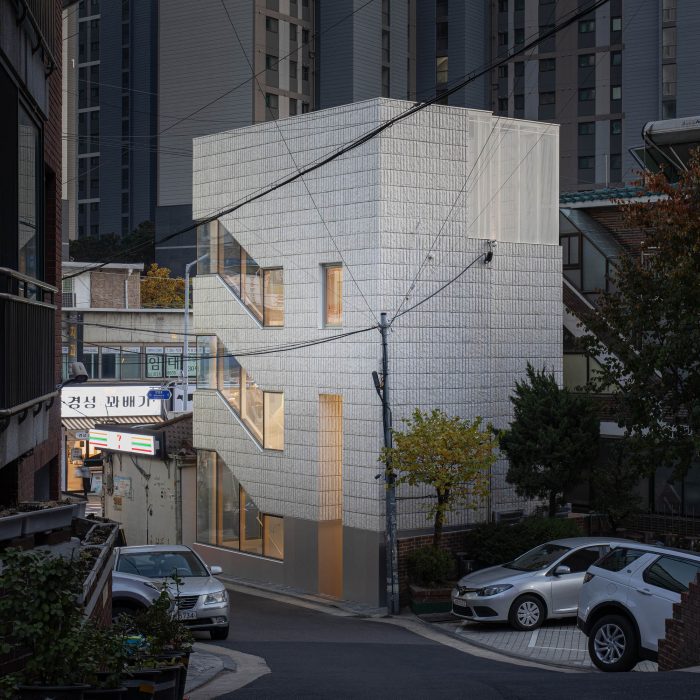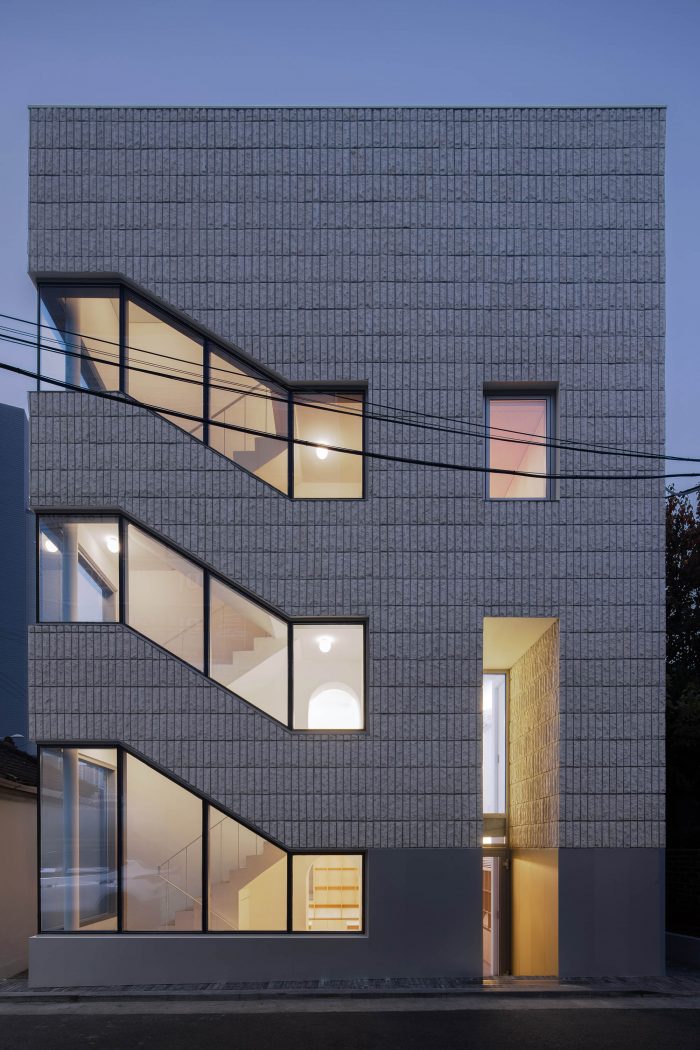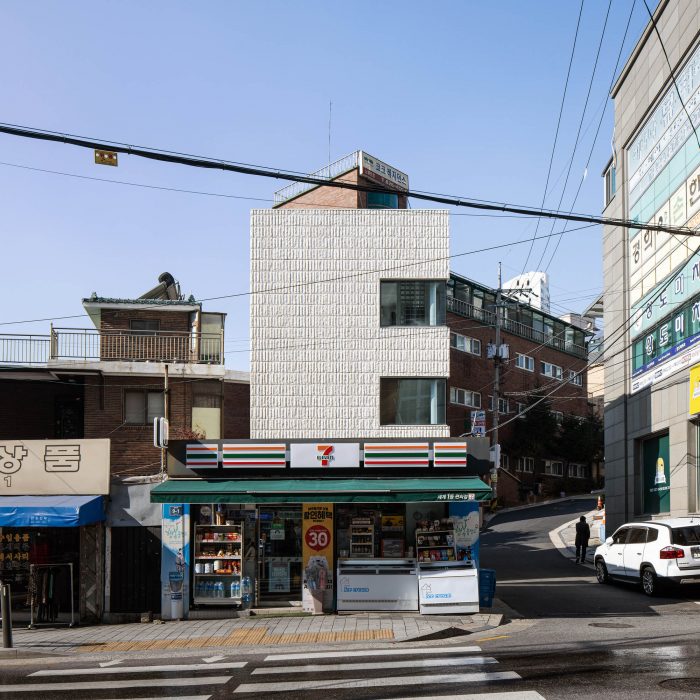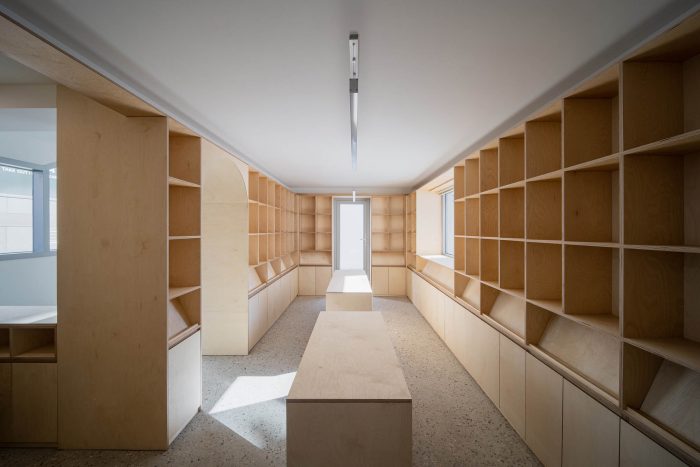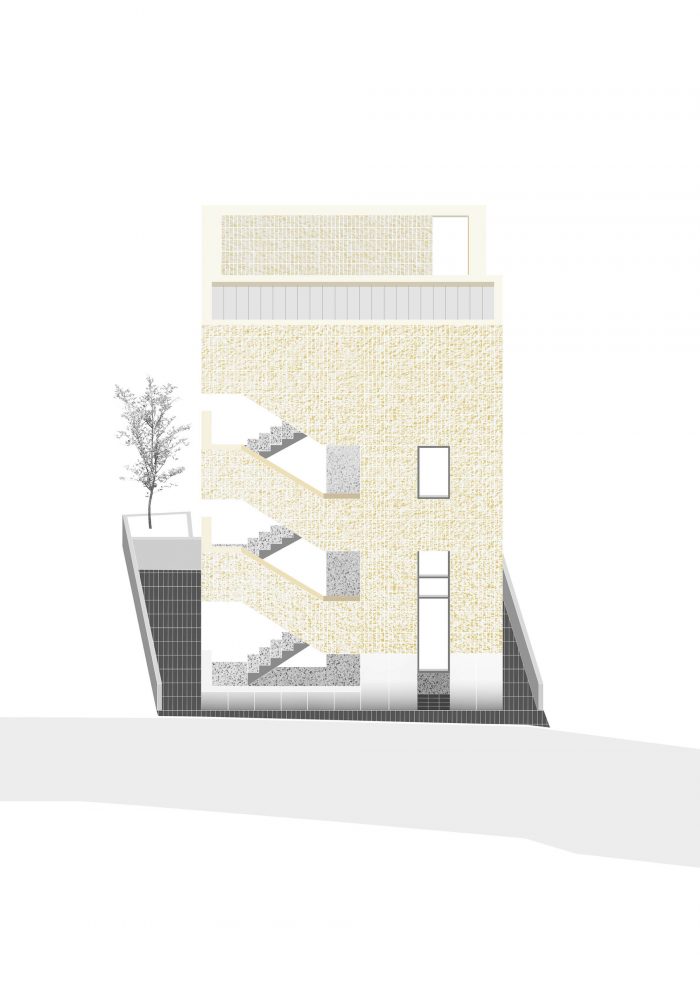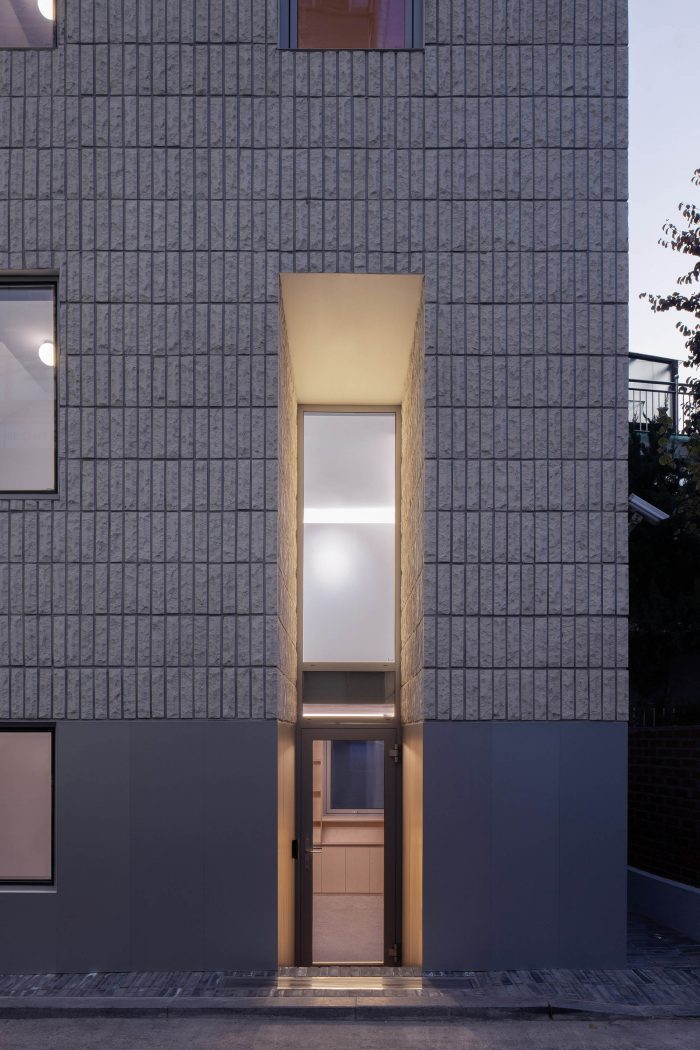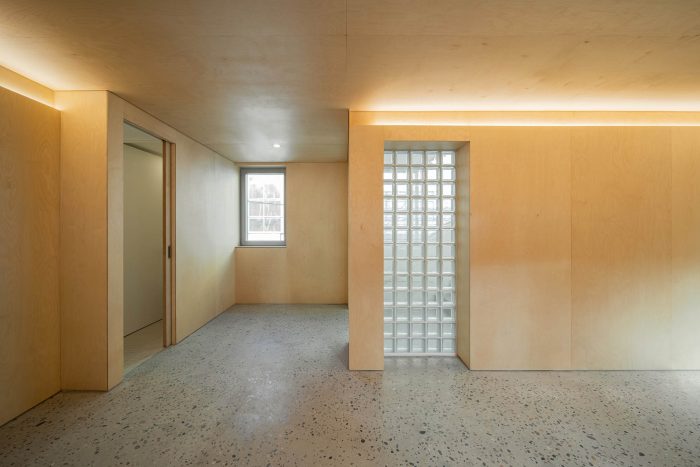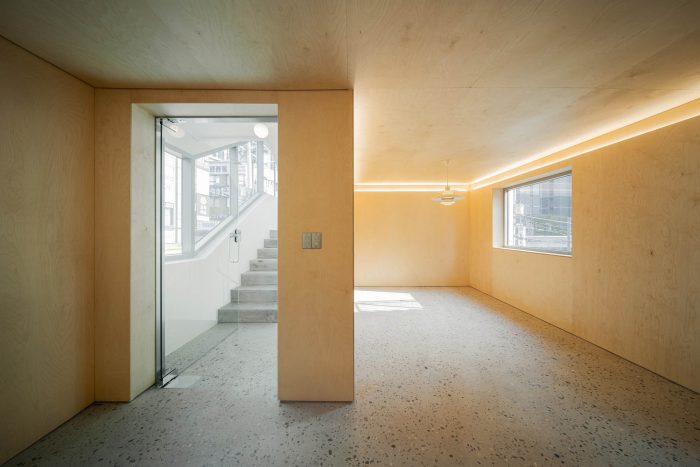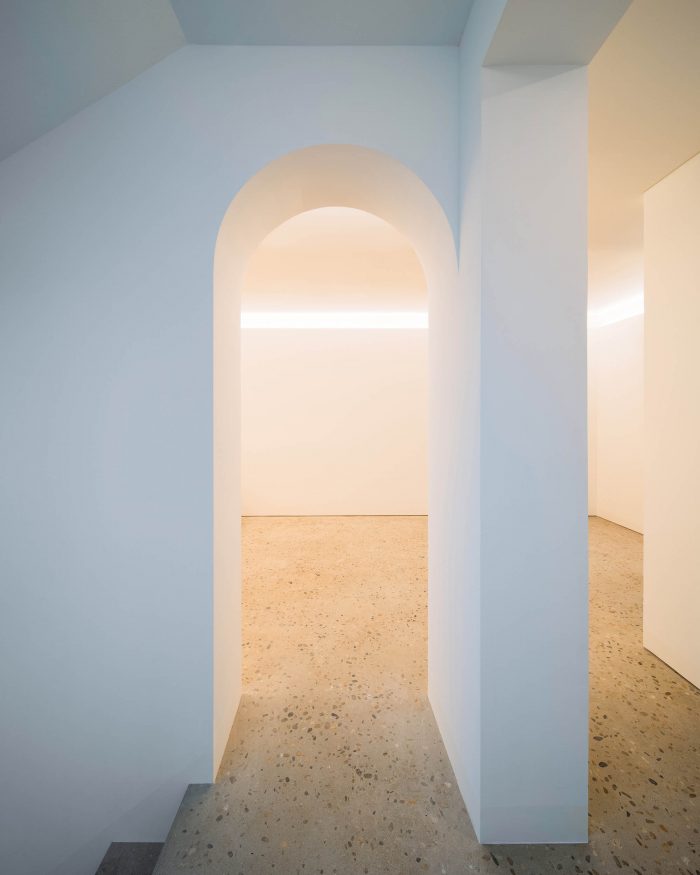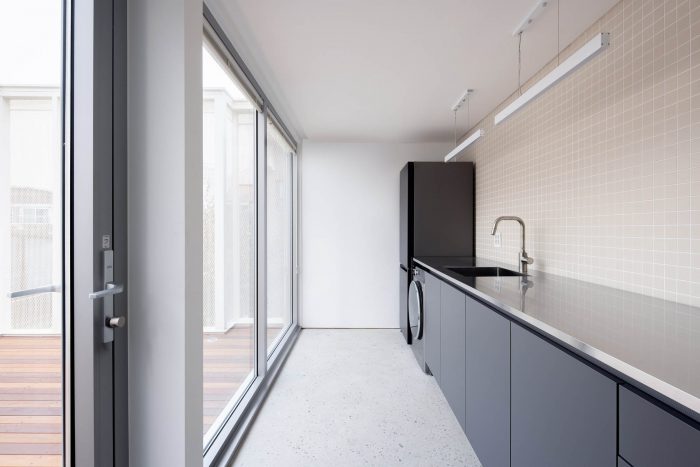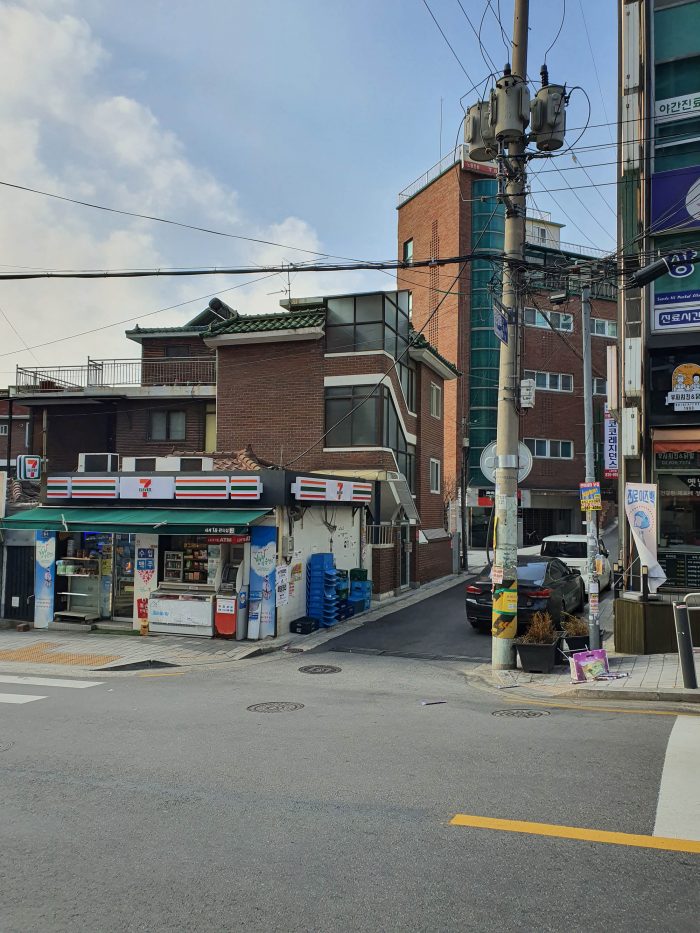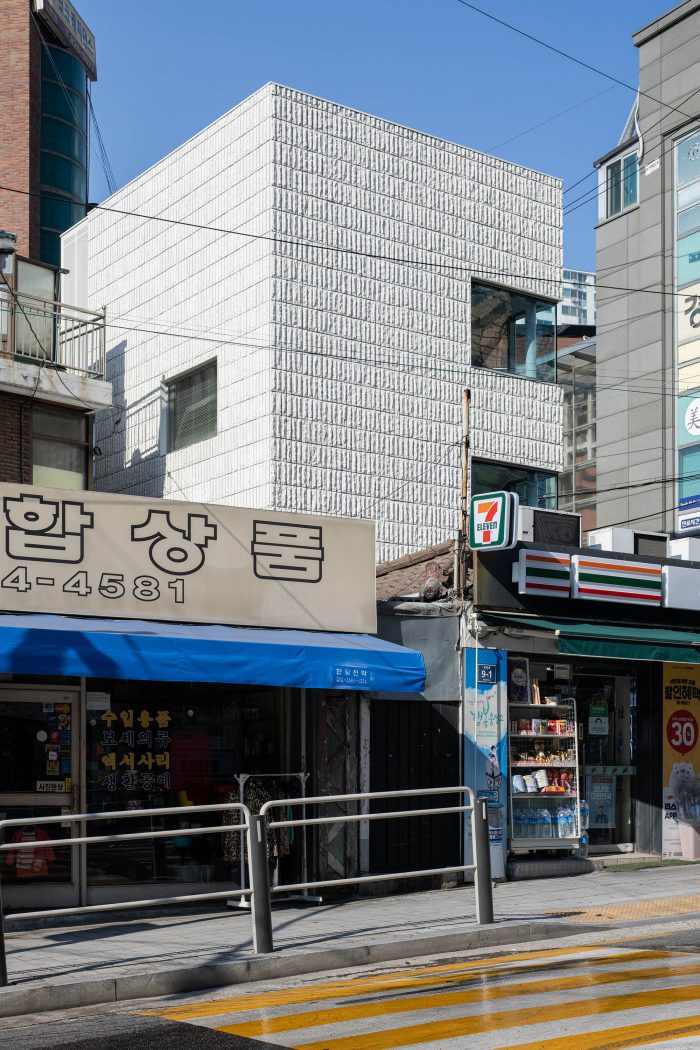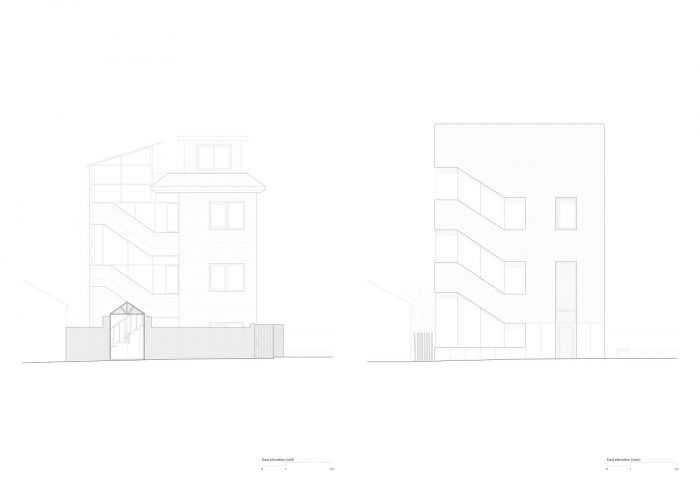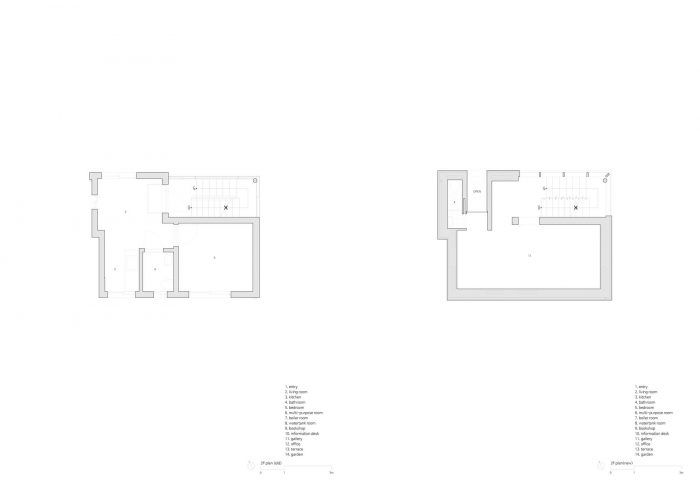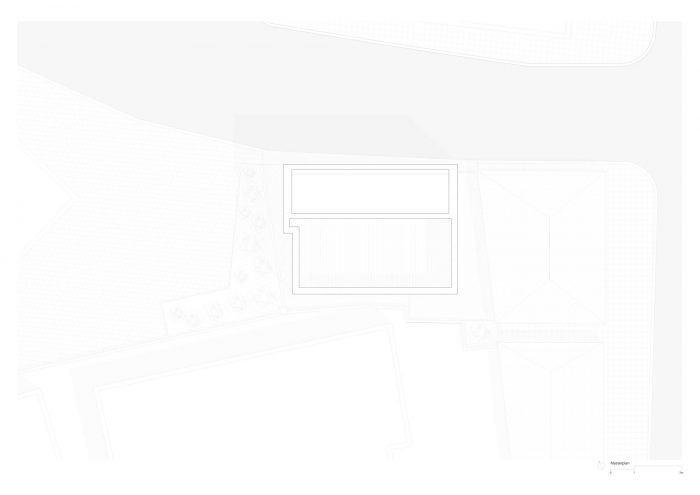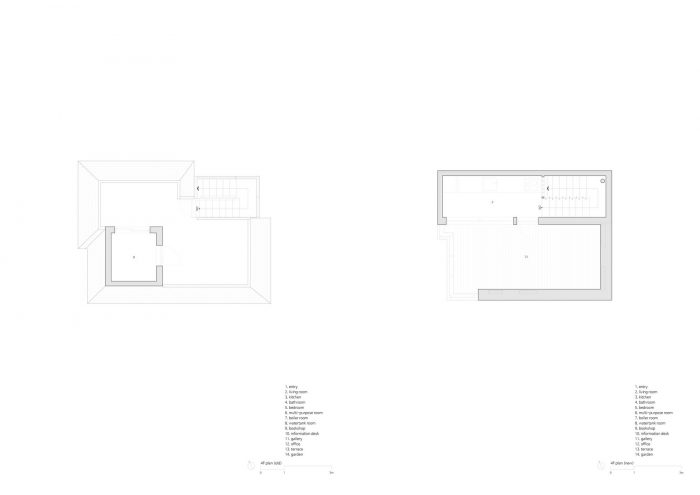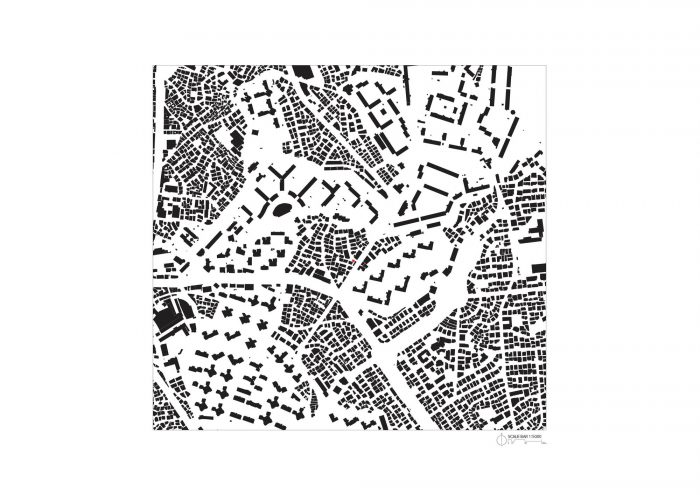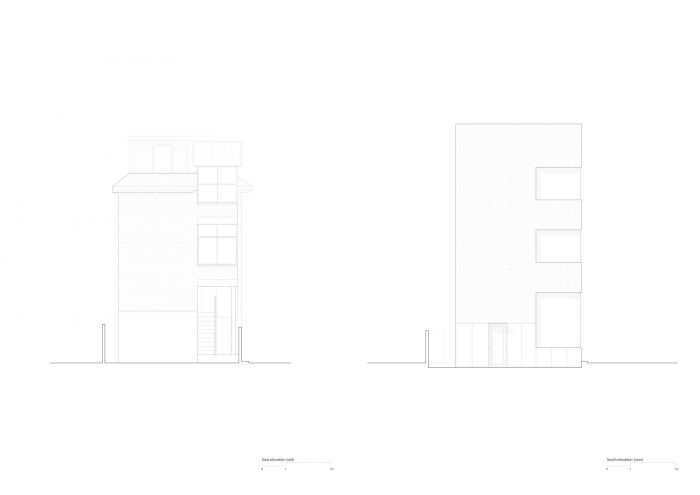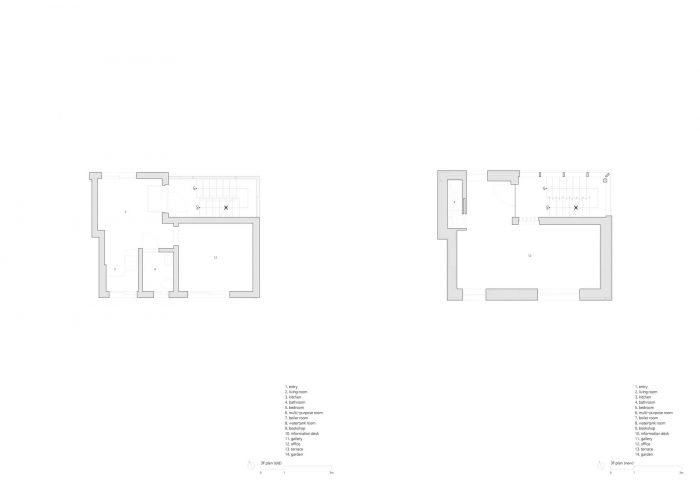在过去的十年里,尚岛经历了快速的再开发,建造了约1万套住房。虽然住房供应量急剧增加,但没有进行再开发的尚岛部分地区很快就被空置了。因此,空置楼房的街道恶化,流动人口急剧减少。这些街道上的小楼房和地段都没有利润。
During the past decade, Sangdo has undergone rapid redevelopment, with approximately ten-thousand housing units being constructed. Housing supply soared, but parts of Sangdo that were not subject to the redevelopment quickly became vacant. Consequently, streets with vacant buildings deteriorated, and the floating population plummeted. Small buildings and lots on these streets were not profitable.
为了克服这种情况,提高该地旧住宅楼的价值,将该楼改造成自营出版社,让漫画家在一栋楼里进行创作、展览和宣传。该项目将建筑的用途从住宅转变为商业,因此需要对入口和楼梯的位置进行调整,对室内外材料进行修改,对房间的尺度进行调整等各种建筑干预。所谓 “颜值提升尚岛”,是指对现有建筑进行整体设计改造,重新评估这个特定住宅区内商业建筑的潜力。
In order to overcome this situation and increase the value of an old residential building on the site, the building was renovated into a self-employed press company for a comic author to write, exhibit and promote her work in one building. This renovation project altered usage of the building from residential to commercial, which incurred various architectural interventions such as relocating entrance and staircase, modifying interior and exterior materials, and adjusting room scales. ‘Face-Lift Sangdo’ refers to the overall design changes made in the existing building, to reevaluate the potentials of a commercial building in this specific residential area.
从一楼到四楼,分别是书店、展览空间、工作室和公共厨房。包括策划、展示、出版、推广等不同阶段的新闻,在建筑中垂直连接。一楼的小花园和四楼的天台空间,让建筑内的活动在需要的时候可以扩大。尽管每层面积不大,约三十三平方米,但拆除了原有的隔断和墙体,可以为每个项目分配足够的空间。
From the first to the fourth floor, there are a bookstore, exhibition space, studio and a communal kitchen, respectively. Different phases of press including planning, showcase, publication, and promotion, are vertically connected in the building. The small garden on the first floor and the rooftop space on the fourth floor allow the activities inside the building to expand when in need. Even though each floor area was small, about thirty-three square meters, the removal of the existing partitions and walls allowed sufficient allocation for each program.
在韩国,为了达到抗震设计标准,通常使用钢柱和钢梁,但它们会大大降低天花板的高度和可用的建筑面积。取而代之的是钢筋混凝土墙体,以满足结构要求,并最大限度地利用室内空间。楼梯被内部化,以垂直连接各项目,并通过继续使用相同的地板材料来调解不同楼层的空间。内部改造后出现的新建筑外立面成为一个店面,暴露了用户在不同项目和楼层的活动。
Steel columns and beams are commonly used to meet the seismic design standards in Korea, but they could significantly reduce the ceiling height and the usable floor area. Instead, reinforced concrete walls were used to satisfy structural requirements and to maximize the interior space. The staircase was internalized to connect the programs vertically and to mediate the spaces on different levels by continuing the same floor materials throughout. The new facade of the building that emerged from the internal transformation becomes a storefront that exposes the movement of the users on different programs and levels.
现有的建筑没有一个 “正面”,它没有一个合适的外立面。正如多户住宅的情况一样,建筑的主入口是一扇薄薄的玻璃门,位于外部楼梯的落地处。由于它离马路很近,入口与街道上的人流之间的循环冲突是不可避免的。为了缓解这种不愉快的碰撞,入口被移到了北面,楼梯也被内部化。因此,东南面的小花园与旧入口分开,成为一楼的无障碍户外区域。前立面狭窄的双高新入口决定了建筑的整体印象。
The existing building did not have a ‘front’ face; it did not have a proper facade. As is often the case for multi-family residential, the main entrance of the building was a thin glass door at the landing of the exterior staircase. Because it was so close to the road, the circulatory conflict between the entrance and the movements on the street was inevitable. The entrance was relocated to the north, and the staircase was internalized to alleviate this unpleasant collision. Thus, the small garden to the south-east was separated from the old entrance, becoming an accessible outdoor area on the first floor. The narrow, double-height new entrance on the front façade dictates the overall impression of the building.
与楼梯开口的重复几何形状一起,它为立面的整体构成带来了一种秩序感。80、90年代的装饰性红砖现在被两种对比鲜明的材料所覆盖:铝包层和石砖。底部光滑的铝包层仿佛撑起了上面看起来粗糙厚重的石头,两种材料之间形成了有趣的对话。
Along with the repeating geometry of the staircase openings, it brings a sense of order to the overall composition of the façade. The decorative red bricks of the 80s and 90s are now covered by two contrasting materials: aluminum cladding and stone tiles. The smooth aluminum cladding on the bottom seems to hold up the rough and heavy-looking stones above it, creating an intriguing dialogue between the two materials.
建筑师:STPMJ
面积:113 m²
年份:2020年
摄影:Bae Jihun
客户:prnt / studio sunny sideup
建筑师 : stpmj Architecture Co.Ltd
城市 : 首尔
国家:韩国
Architects: stpmj
Area: 113 m²
Year: 2020
Photographs: Bae Jihun
Client:prnt / studio sunny sideup
Architects:stpmj Architecture Co.Ltd
City:Seoul
Country:South Korea

